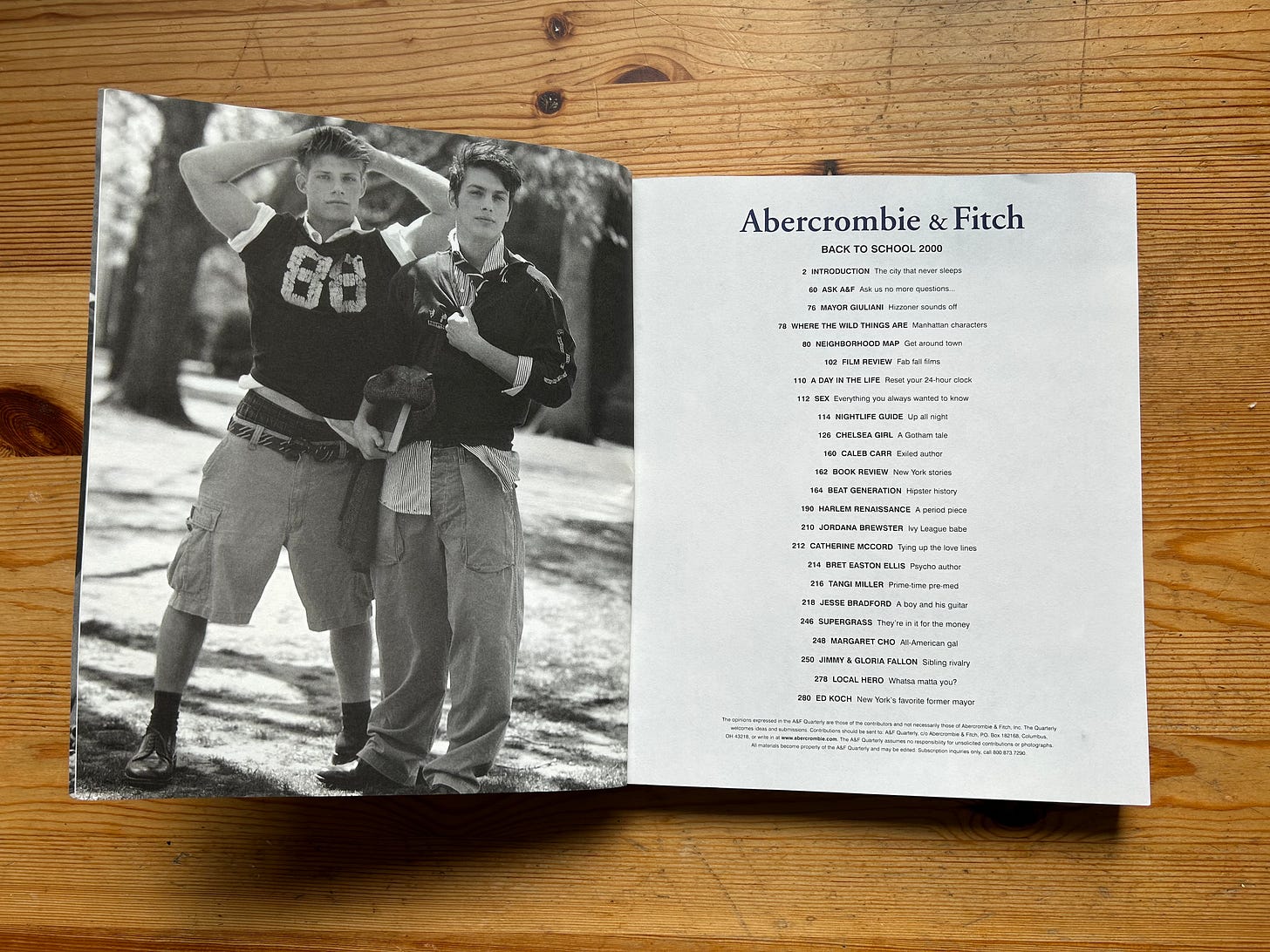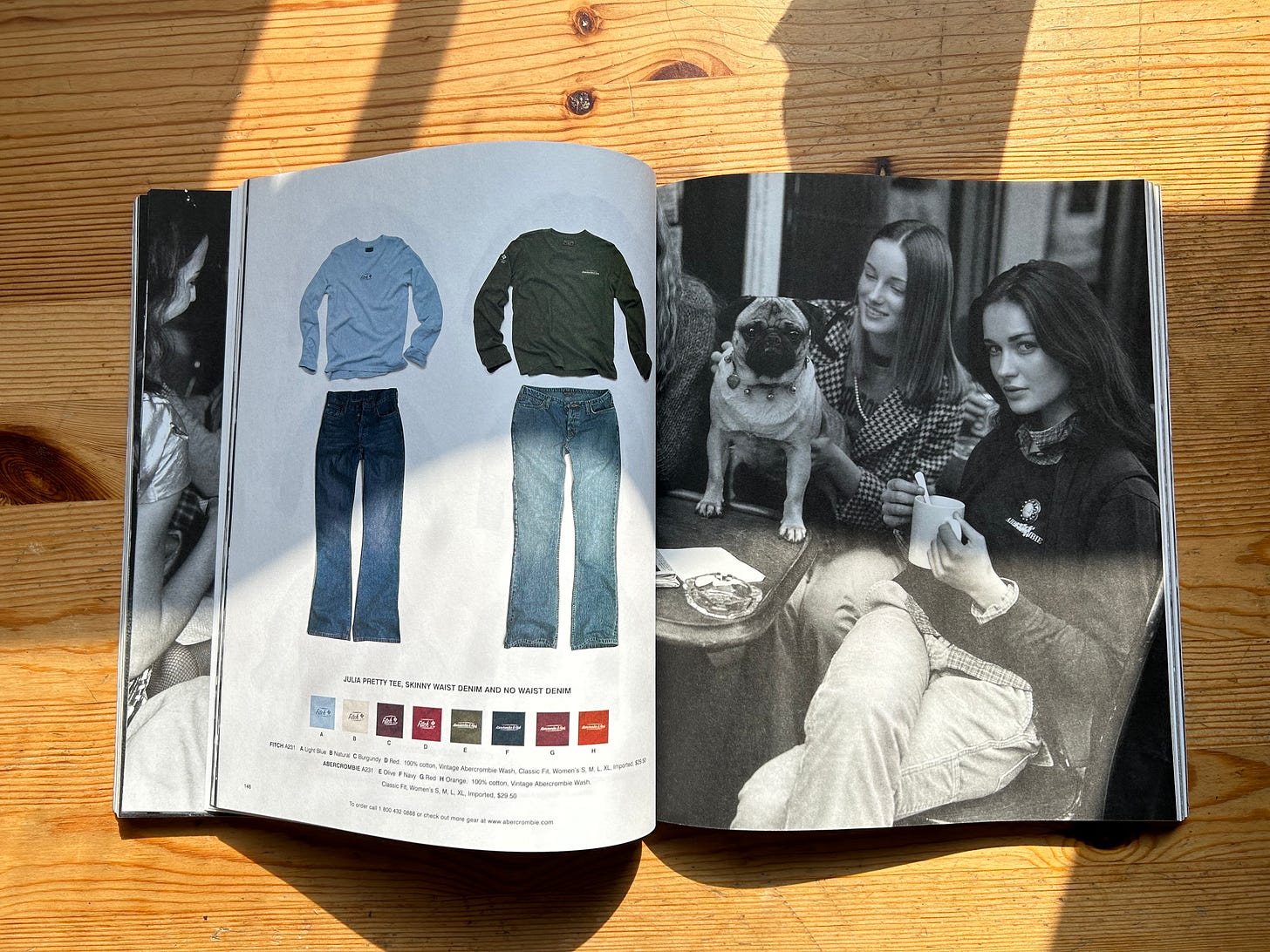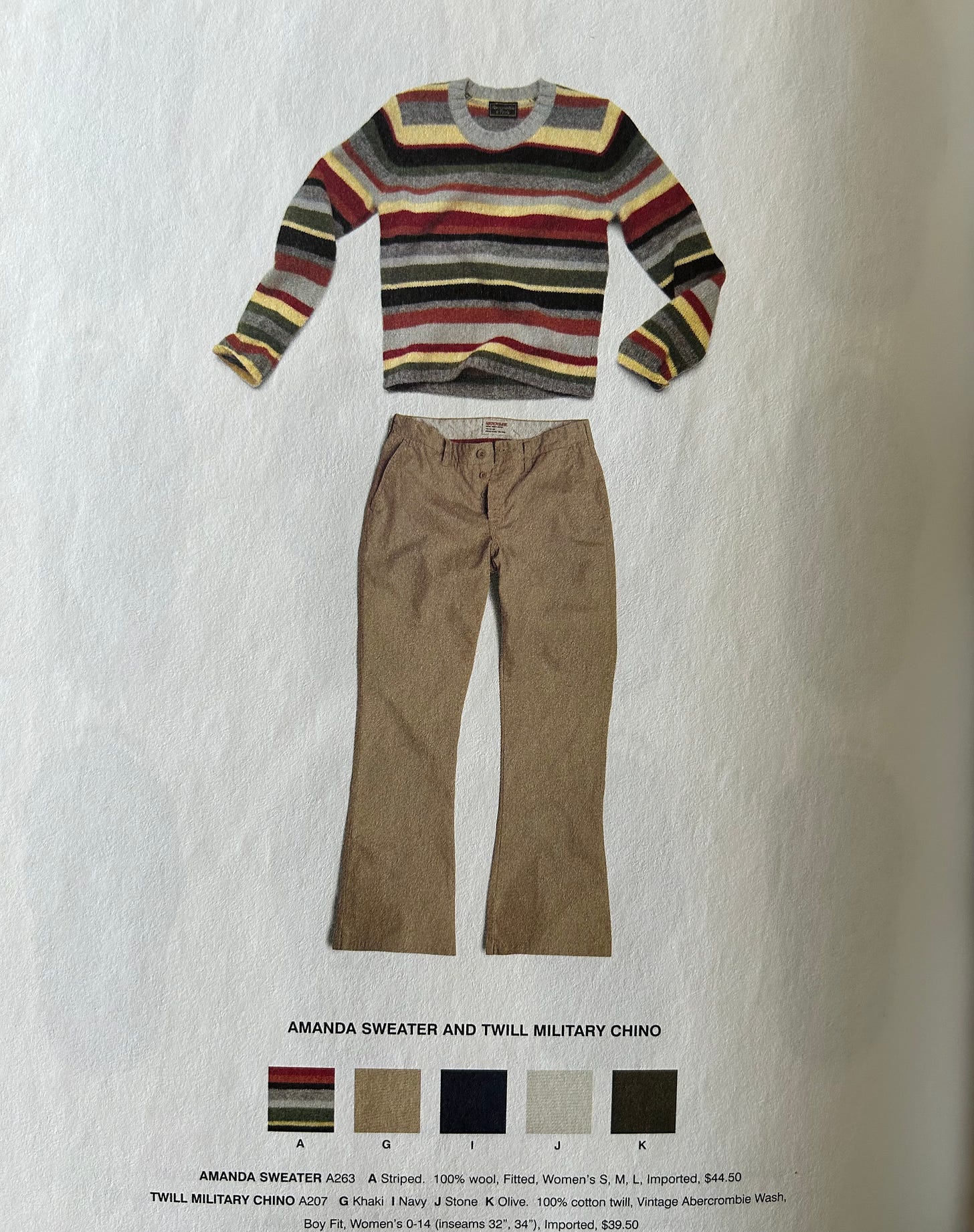Cultural Artifact: Revisiting the Back-to-School 2000 Issue of A&F Quarterly
The Abercrombie & Fitch catalogue is bizarre, problematic and brilliant all rolled into one.
As a journalist, I suspect that I harbour an above-average affinity for physical media. I still own the copious back issues of ELLEgirl (RIP) and Teen Vogue that I spent hours poring over (and cutting out pictures to make collages) in high school, which no doubt nudged me toward my current line of work. But one of the most prized possessions in my estimable collection of physical media is the September 2000 ‘Back to School’ issue of A&F Quarterly, the extremely controversial catalogue-cum-magazine produced by mall brand Abercrombie & Fitch between 1997 and 2003.
I found it while searching the discount bin at the Strand Bookstore when I was living in New York in 2017, and while it may not be the famous issue that Slavoj Žižek wrote ad copy for, I did immediately know that I had to buy it. It cost me $10 (I quickly checked and copies now go for $100+ on the secondary market.) As an object, the Back to School 2000 issue of A&F Quarterly functions as the perfect encapsulation of life before 9/11, which we now look back on as a golden age of political stability and economic optimism. For a brief moment, you can turn the pages and be transported to an era of carefree adolescence when life’s main concern was which college you would get into and how loaded you were going to get on homecoming weekend.
The tone of the magazine is wildly irreverent and completely unsanitized, akin to old issues of VICE, which is shocking when you remember this is supposed to be a corporate enterprise. One headline takes a direct shot at another magazine, reading, “If you’re looking for something boring, go read Redbook.” Almost every story in the magazine is more insane than the last. This issue is New York-themed, and begins with an interview of pre-9/11 Rudy Giuliani, when he was still best known for being New York’s affable “tough on crime” mayor. He brags about turning New York from “the welfare capital to the city that has reduced welfare the most.” There’s a feature caricaturing several “types” of New Yorkers, which takes jabs at skinny models and Leonardo Dicaprio, before making a jaw-droppingly homophobic joke about German tourists. There’s a feature called ‘Sex and the City’ where the writer chronicles getting a handjob at a massage parlour and a weird interview with Jimmy Fallon and his sister promoting a book of emails they had written to each other. In not even the most perverse instance of boundary crossing, the male journalist interviewing Felicity actress Tangi Miller asks, “Your place or mine?”
Amidst it all, of course, are the clothes. Between feature stories on the Harlem Renaissance and a chronicle of life in the gritty Chelsea Hotel are rumpled flat-lays of chunky knit hooded sweatshirts, beaded necklaces and something called “no-waist denim.” Looking at the clothing immediately brings me back to middle school and memorizing the sporty-grunge outfits worn by older kids, which looked nothing like the Y2K revival clothing currently being donned by Gen Z. There are elegant black-and-white photographs of preternaturally beautiful 20-year-olds lounging around on beaches, feigning louche behaviour in nightclubs, and making out in cafes. The photos are arresting and high-fashion, of course, because they were taken by Bruce Weber, the now-disgraced photographer accused of sexual assault by 20 male models. In hindsight, the untoward advances that very likely took place on the set of these photoshoots lends a dark quality to the images, but it’s hard to ignore the beauty that exists in them at the same time.
Frankly, it’s kind of miraculous that something like A&F Quarterly even managed to come to fruition at all when you think about all of the sex trafficking that was apparently going on behind the scenes. Mike Jeffries, Abercrombie’s CEO from 1992 to 2014, was best known for a long time as the guy with botched plastic surgery who told a journalist, “We want to market to cool, good-looking people. We don't market to anyone other than that.” (You should read the entire 2006 Salon.com feature story that quote comes from, which is unbelievably funny.) The brand was even boycotted by the deeply conservative American Decency Association, which sold t-shirts reading, "Ditch Fitch: Abercrombie Peddles Porn and Exploits Children." Now, Mike Jeffries is better known as the Jeffrey Epstein of fashion retail, thanks to his arrest last year for one count of sex trafficking and 15 counts of “interstate prostitution.”
For all its flaws, A&F Quarterly is truly a feat of advertising. It serves as a reminder that there was once a time when genuine creativity was encouraged, journalists had fun, and huge advertising budgets were directed towards producing print magazines of quality and substance. Fashion media has always been about moving product, but at least it used to be good. The closest thing we have now is the editorial arm of the SSENSE website. I hope it never dies.









